Historically, the study of the literature of medieval Iberia has been characterized by disciplinary territoriality and impaired by ideological positions tied to national literature approaches that have, in my opinion, impoverished the field. As is the case with other territories where one dialect of a related group became an official national language, the field has been Castilian-centric. In the 20th-century US, the field was essentially founded dominated first by European-trained Romance philologists, many fleeing Hitler or Franco. Eventually, as Hispanic studies became more and more a reflection of increasing US interest in Latin America, medieval Spanish studies became less a sector of Romance Philology or of Western European philology in general and more the back story to the current drama of the Latin American Boom novel, the literature of the Mexican Revolution, and the poetry of Pablo Neruda. This led to a shift in student perception of medieval literature and language from that of a ‘classical tradition’ that was indispensable to understanding Spanish national literature, to a quaint curiosity with little obvious relevance to modern Latin American literature and culture, with the possible exception of the literature of the Colonial period. For many US students of Hispanic literature the medieval survey course is little more than a bitter bill one must swallow. In recent years, as US Latino studies has gathered momentum, the study of medieval literature has been further marginalized as the curriculum has expanded and student interest further shifted forward in time, across the Atlantic, and increasingly, on the US-Mexico border.

the light of theory
The rise of Latin American studies has, paradoxically, been a benefit to medievalists in that the massive proliferation of undergraduate and Masters degree programs in Spanish at US universities has provided medievalists with a steady flow of reluctant students who are required to study at least one course of premodern literature to graduate. An additional benefit has been that the dominance of Latin American studies has forced medievalists to come out of their caves blinking into the sunlight. Now surrounded by colleagues whose ideological and methodological approaches differed radically from those of the medievalists who trained them, medieval Hispanists began to come to grips with the politicization of literary studies, the corpus of critical theory that had become the currency of the realm, and the pressing need to demonstrate the relevance of their studies to a student body who has neither consciousness of nor faith in the idea of literary history.
Many Spanish majors who are required to take my courses have little vocation for literary study but rather are pursuing their degree in Spanish in order to certify their proficiency in the language and in what they like to call the ‘culture’ of the Hispanic-Latino world. About 50% of them include the literature of this world as part of said culture. This has forced us as Hispanists to rethink what it is that we have on offer, a rethinking that can be productive for one’s own research if you do not spend too much time lamenting the Old Days, when we imagine Spanish majors were simply English majors who wanted to become little Delmira Augustinis and Lorcas instead of little Virginia Woolfs and Joyces.
One of the exiles who came to the US during the Franco period had a massive impact on the field of medieval letters. Américo Castro, who taught at University of Houston and at Princeton University during the second half of the twentieth century, cracked the field wide open. Working within the national literatures framework, his thesis was that Spain’s national character was not a product of a Roman-Visigothic-Haspburgian cultural continuity, but rather was the hybrid product of the various religious and ethnic traditions who had always populated the Iberian Peninsula, including the Andalusi Muslim and Sephardic Jewish traditions. While he did not go as far as displacing Castile from the center of Spanish studies, he opened the field to Hispano-Arabic and Hispano-Hebrew studies. One effect of this intervention was to privilege the literary voices of non-Christian residents of Christian Iberia.
It must be noted, that however much the Hebrew and Arabic literary production of medieval Iberia has been marginalized within Hispanic studies, Portuguese and Catalan (to say nothing of Latin) have been equally if not more overshadowed by Castilian. The rise of Hispanic and Latino studies in the US has been a bilingual enterprise carried out nearly exclusively in Spanish and English. This leaves not just Hebrew and Arabic out in the cold, but all the other languages of literary production in medieval Iberia as well: Latin, Catalan, Aragonese, Galician-Portuguese, etc. Portuguese has had a considerable boost both by the Portuguese emigree community in the US, and more recently by increasing interest in the Brazilian economy and vernacular art forms, but Catalan remains the red-headed stepchild of medieval Hispanic studies. A decent level of support is available from the Generalitat de Catalunya, but interest even among graduate students of medieval Hispanic literatures is relatively low. The post-Franco Catalan revival has attracted a good deal of scholarly attention among modernists, but Catalan lags far behind Castilian in terms of graduate student interest. Finally Latin, the administrative, liturgical, and creative language of Christian Iberian kingdoms prior to the rise of the literary vernaculars, produced a massive literary corpus that Hispanists have studied but are hard pressed to teach due to a lack of critical translations and the fact that Iberian Latin works are not typically included on PhD reading lists in Hispanic Studies.
Castro vs Sánchez Albornoz etc
For those of us working in the US, it was the legacy of Américo Castro that had the greatest impact on this debate. Castro threw down the multicultural gauntlet. It was a real challenge to the field, a call to arms. His approach was most popular in the US, where he taught, and far less so in Spain, where the patirarchal and endogamous pattern of graduate education and hiring practices still held sway. Castro’s students and followers in the US, notably Francisco Márquez Villanueva, Sam Armistead, and James Monroe, during the last quarter of the 20th century and the first decade of the 21st, all continued to explore the idea that Spain’s literary and vernacular cultures were not simply a reaction to the history of Islam and Judaism in the Peninsula, but were heirs, hybrids, a mulicultural product of this history. Consequently any assessment of medieval Iberian culture that omitted the Peninsula’s Semitic legacy was incomplete at best and patently racist at worst.
Castro’s students, and his students’ students, took up the challenge with great zeal. His multicultural thesis resonated with the brewing US multiculturalism that exploded in the wake of the Vietnam War. James Monroe (Emeritus at UC Berkeley), who took his PhD in Romance Languages at Harvard, went on to almost single-handedly champion Andalusi literary studies outside of Spain, always with the idea that, as he put it, and with only slight exaggeration, “Spanish is a dialect of Arabic.” The late Francisco Márquez-Villanueva (Emeritus at Harvard) wrote extensively on the semitic cultures of the Iberian peninsula and their deep footprint in what would become Castilian and then Spanish literary and intellectual culture. The late Samuel Armistead (Emeritus at UC Davis) dedicated a lifetime to the study of the culture of medieval Iberia and its transformations in the culture of the Sephardic Jews. His student, the late María Rosa Menocal (Yale) famously disrupted the field first with her book The Arabic Role in Medieval Literary History in which she championed the so-called thèse arabe of the genesis of troubadour poetry, and also challenged Hispanist approaches to the Andalusi legacy of Peninsular literary culture. More recently Menocal published a popular trade book, titled The Ornament of the World, a multicultural history of medieval Iberia that delighted general readers and sympathetic specialists, and infuriated more orthodox historians who felt that her intervention was an incursion on their territory and a heresy of speculative, even revisionist history in the spirit of her academic grandfather, Américo Castro. The academic grandchildren of Castro, such as Harvard’s Luis Girón-Negrón, Minnesota’s Michelle Hamilton, and Michigan’s Ryan Szpiech, are continuing and nuancing the work begun by Castro and his students, and continue to interrogate linguistic and religious categories of scholarly inquiry. 
The debate begun by Américo Castro and his archnemesis Claudio Sánchez Albornoz continues to this day. In Spain, where the question of the national Semitic legacy is neatly mapped to the political faults of the Spanish Civil War, and therefore painfully relevant, this academic debate spills over into the areas of popular history and public policy. While Spanish Arabists and Hebraists continue to do excellent work in relative obscurity, popular histories espousing Castrista or Sanchezalbornocista views line the shelves of train-station bookstores with provocative titles like al-Andalus versus Spain by Serafín Fanjul, Spain before Islam, from Muhammad to Bin Laden, by César Vidal Manzanares, and my personal favorite, Non-existent al-Andalus by Rosa María Rodríguez Magda.
Hebrew:
The question of medieval Spain in Hebrew studies is plagued by a secondary nationalism by which a Judeo-centric focus has tended to minimize the Arabic and Romance contexts of Hebrew literary production in al-Andalus and Christian Iberia. As with the case of the Castilian poets of the middle ages, the canonical Hebrew poets of al-Andalus have become the classics of Hebrew or Jewish literature, and as such are vehicles for all sorts of ideological programs that condition the study of and estimation of their work. Andalusi and Andalusi Hebrew literature is not typically considered as Spanish Literature, and Spanish school children do not learn the verses of Ibn Zaydun and Samuel Hanagid Naghrela in translation alongside those of Gonzalo de Berceo and Juan Ruiz. Spanish universities do in fact teach Hebrew and Arabic and produce a steady stream of academic specialists in Hebrew and Arabic literature of the Peninsula, but only recently do we see studies incorporating primary poetic texts in both Hebrew and Arabic. Within Hebrew/Arabic, especially with regard to the study of Hebrew Andalusi material, we have a simliar nationalist agenda that has been complicated by the emergence of the State of Israel with Hebrew as one of its official languages and Arabic as an official language with a much lower status. Some of the patterns of institutional bias in Hebrew and Arabic studies that obtain in Spain are also true in the US and UK. In the US, for example, Judaic studies is supported by Jewish funders whose ideology tends toward the conservative, the Zionist, and consequently toward the marginalization of Arabic as a Jewish language of expression.
In the United States, the UK, Spain, and Israel there are a large handful of specialists working on medieval Sephardic literature. Most of them, with the exception of those trained in Spain, have only a passing familiarity with the Romance languages and literatures of the Peninsula, and even those working in Spain, with the exception of those trained by the recently deceased Ángel Sáenz-Badillos (Complutense), are interested in the broader vernacular and classical contexts of the Hebrew literature of the Peninsula. To wit, the recent book by Jonathan Decter of Brandeis University on Hebrew literature in transition between al-Andalus and Christian Europe is a solid effort to situate Hebrew literature in the context of Romance literatures, but ultimately the author, whose training in Arabic and Hebrew is formidable, is less familiar with the Romance traditions of the Peninsula. As Karla Mallette and Sharon Kinoshita both point out in recent articles, the linguistic challenge of the medieval European or Mediterranean comparatist is significant, and it is rare to encounter a scholar with sufficient preparation in both Semitic and Romance languages to do justice to the material. This underscores the need for collaborative work, which unfortunately (at least in the US academy) does not pass muster for purposes of tenure and promotion. This is another way in which the professional norms of the academy can frustrate pan-European or pan-Mediterranean scholarship.
Among Israeli scholars one can observe a dynamic similar to that which obtains in Spain: disciplinary culture discourages comparative work, from the moment one begins their doctoral work forward.
The question remains as to how to reverse or diffuse this trend. Individuals such as those mentioned above can endeavor on their own accounts to learn the necessary languages and seek out the necessary training, but once employed by departments of national or modern languages, the institutional environment encourages more traditional work in terms of linguistic and methodological approach. My question, then, in terms of methodology, is this: if we are seeking new paradigms to offset the national paradigm, how do we avoid falling into parallel orthodoxies or formations that are strictly reactive to national literatures?
Works cited
- Kinoshita, Sharon. “Medieval Mediterranean Literature.” PMLA: Publications of the Modern Language Association of America 124.2 (2009): 600-08.
- Mallette, Karla. “Boustrophedon: Towards a Literary Theory of the Mediterranean.” A Sea of Languages: Rethinking the Arabic Role in Medieval Literary History. Ed. Suzanne Conklin Akbari and Karla Mallette. Toronto: University of Toronto Press, 2013. 254–266. Print.
This post is based on a presentation I gave to the Center for Medieval Literature’s Interfaces group at their recent meeting, “Rethinking Medieval European Literary History,” held at Fondation des Treilles, France. Many thanks to Profs. Lars Boje Mortensen (Southern Denmark), Elizabeth Tyler (York), and Christian Høgel (Southern Denmark) for their invitation.

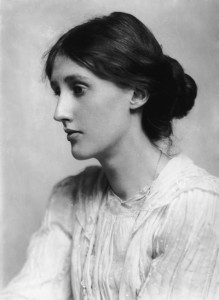
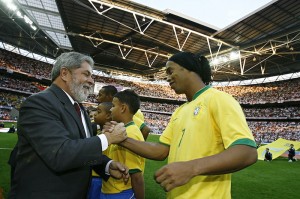
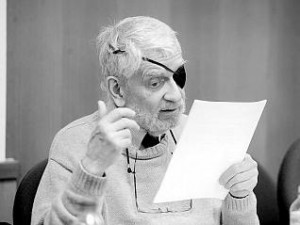
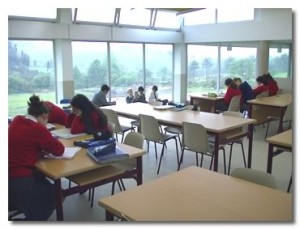

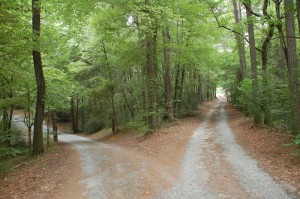
An excellent presentation. As a first year graduate student, I actually enrolled in a course given by A. Castro, as visiting Lecturer at Harvard (Spring 1962). He came up from Princeton every other week, and the course was managed by Juan Marichal. The catalog said “Span Lit of the 16th Century,” but it was really “Castro sobre Castro”. The whole department attended, including James Monroe, Dorothy Severin, Raimundo (and Denah ) Lida, Paul Benichou, F. Marquez Villanueva, and Joan Evans Vda. de (Amado) Alonso .( S. Gilman was away on sabbatical in Spain.) At age 77,Castro was still a very dynamic presence “fogoso y vehemente,”; However, we young scholars-in-training received a very tendentious view of the ongoing polemic.Ultimately, Marquez (second reader on my thesis) soon became more “castrista’ than Don Americo!
As an adjunct to my perennial interest in Menendez Pidal, I eventually questioned his role, as the most “prestigious” Hispanist of all, in the “jarcha” canonization process. . An article on mine appeared, somewhat buried in “A Living Legacy…CCNY””, ed. Mercado and Lerner (Juan de la Cuesta, 2006), “Canonization and Cultural Politics : The case of the jarchas”. There I attempt to prove that it was D. Alonso (“Primavera temprana”, following E. Garcia Gomez (who had a monopoly on the Hebrew and some Arabic MSS, undertook a Romanized transcription , so as to place the fragments under the rubric of “Spanish” literature. Menendez Pidal (“Cantos romanicos andalusies, 1951) felt vindicated, :considering the ‘estribillos” to be “continuadores” of some kind of “Vulgar Latin” lyric. The newly discovered “jarchas” indicated that he had been correct in 1938, with “Poesia arabe y poesia europea.” In my article I contend that the renown trio of scholars,(always very patriotic,especially under Franco) caused the Romanized jarchas to enter all the “Antologias” of the period, but that if they had published them in original Hebrew alphabet, not many Spanish scholars would have considered them to be “Spanish” poetry.— not to mention the Spanish public.
All this may not be relevant to your panorama, but ultimately, the lack of solid textual evidence would lead to the ‘revisionist” edition and commentary of R. Hitchock, the near denial by F. Corriente, (then a retort by A. Galmes de Fuentes) followed by the well argued “neotraditionalist” defense by Sam Armistead., which filled several issues of “La coronica”
Steven Hess (Long Island University, retired)
Steven, thanks very much for taking the time to comment and for sharing your experience with Don Américo et al. Your take is extremely relevant to my panorama in fact, and points up why there is to date no authoritative edition/translation of the kharjat en su salsa, that is, in the context of their muwashshahat, etc.
that is good information